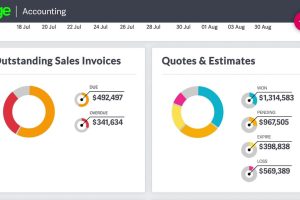Content Attributes
Asphalt is a blend of aggregates, filler, and binder. It used for the construction and maintenance of roads, airport runways, parking lots, driveways, sidewalks, and play areas. The aggregates used in asphalt include sand, crushed rock, slags, or gravel. And a binder is used to bind these aggregates into the asphalt mixture that we see being poured on our roads.
Bitumen is the common material used as an asphalt binder. Also, some manufacturers add very small particles known as fines to prolong the pavement’s lifespan. In addition, some companies do add certain chemicals to the asphalt mixture like polymers to increase flexibility or hydrated lime to make the aggregates bond better.
However, it’s important to note that the ingredients can vary depending on the intended use of the asphalt and your area’s climate. Asphalt for cold climates is a bit soft, unlike the asphalt for areas with hot climates, which made hard to withstand hotter temperatures.
Now, since you understand what materials are used in asphalt. Let’s look into the different types of asphalt and the materials used in these asphalt blends.
Warm Mix Asphalt
Warm mix asphalt is a type of asphalt that can placed and compacted at lower temperatures. This is because the mix contains additives that reduce the viscosity of the binder at lower temperatures, making it easier to work with.
Warm mix asphalt produced by adding either zeolites, waxes, asphalts, or emulsions to the binder. The most common additive used known as Evotherm3G. Which is a proprietary mixture of glycerin, water, and propylene glycol.
Warm mix asphalt has many benefits over traditional hot mix asphalt. These benefits include:
- Lower emissions during production and placement
- Energy savings of up to 20%
- Reduced wear and tear on equipment
- Lower road surface temperatures
- Reduced noise levels
Polymer Modified Asphalt
Polymer modified asphalt is a type of asphalt that uses polymers to improve the performance and extend the life of the pavement. The polymers are usually added to the binder before mixing with the other aggregates. And these polymers can be either organic or inorganic.
Organic polymers are made from petrochemicals, while inorganic polymers are made from silica, clay, and aluminum oxide. There are many different types of polymer-modified asphalt, but they all have one common goal: to improve the durability and lifespan of the pavement.
Some of the benefits of polymer modified asphalt include:
- Increased resistance to rutting, cracking, and weathering
- Improved skid resistance
- Reduced noise levels
Bituminous Concrete
Bituminous concrete is a type of asphalt that uses a Portland cement concrete binder. The Portland cement concrete binder is usually mixed with sand, aggregate, and water to create a slurry added to the hot asphalt mixture.
Bituminous concrete is used for pavements that need high strength and durability. And it’s often used for paving airport runways, parking lots, and other high traffic areas. The main benefit of using bituminous concrete is that it’s more resistant to cracking, rutting, and weathering.
Stone Mastic Asphalt
Stone mastic asphalt is a type of asphalt that uses a higher proportion of larger aggregate than traditional asphalt mixes. The larger aggregate is combined with a lower ratio of filler and binder to create a pavement that’s more resistant to deformation and wear. Stone mastic asphalt is often used for paving airport runways, roads, and other high-traffic areas. The main benefit of stone mastic asphalt is its increased resistance to deformation and wear.
Hot Mix Asphalt
This used for paving roads, parking lots, and other high traffic areas. Hot mix asphalt is the most common type of asphalt. It’s made by mixing the asphalt binder with aggregate and then heating the mixture to create a hot, fluid asphalt that can be easily placed and compacted. The main benefit of hot mix asphalt is its ease of construction.
Cold Mix Asphalt
It is a type of asphalt that doesn’t need to be heated before it’s mixed with the aggregate. Cold mix asphalt is made by adding either emulsified asphalt or cutback asphalts to the aggregate.
The emulsified asphalts are made with water, while the cutback asphalts are made with solvents. Cold mix asphalt is used for paving roads, parking lots, and other high traffic areas. The main benefit of cold mix asphalt is its ease of construction. Cold mix asphalt can be mixed and placed at lower temperatures than hot mix asphalt.
Asphalt Concrete
Asphalt concrete is a type of asphalt that uses a Portland cement concrete binder. The Portland cement concrete binder usually mixed with sand, aggregate, and water to create a slurry added to the hot asphalt mixture. Asphalt concrete used for pavements that need high strength and durability. And it’s often used for paving airport runways, parking lots, and other high traffic areas. According to experts from CSG Sealcoating, Jacksonville, the main benefit of asphalt concrete is its high strength and durability.
Asphalt Emulsion
Asphalt emulsion is a type of asphalt that uses an emulsified asphalt binder. The emulsified asphalt binder mixes the asphalt with water and then adds a surfactant to create an emulsion. Asphalt emulsion used for paving roads, parking lots, and other high traffic areas. The main benefit of asphalt emulsion is its ease of construction. Asphalt emulsion can be mixed and placed at lower temperatures than hot mix asphalt.



